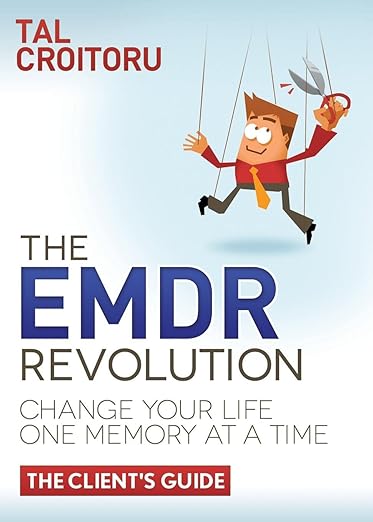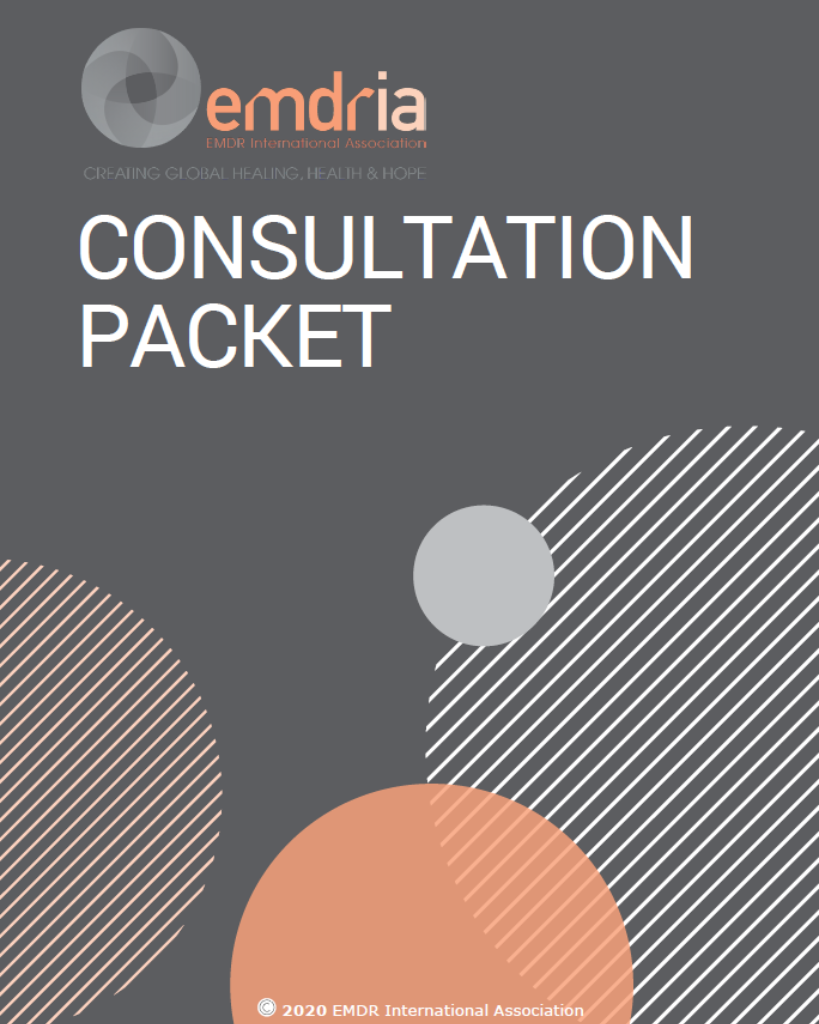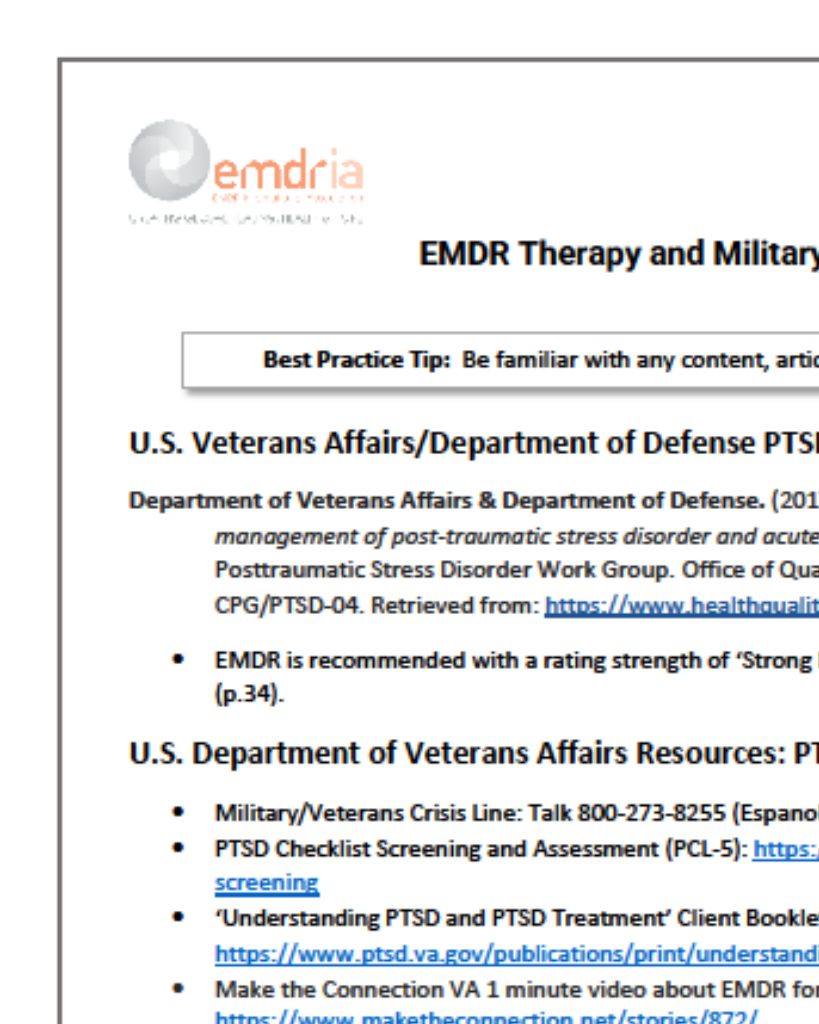The EMDR Revolution: Change Your Life One Memory At A Time (The Client’s Guide)
In The EMDR Revolution you will discover information you need when feeling distressed or inhibited, as a way to select the appropriate help.
About the Book
“Have you been experiencing negative feelings for a significant amount of time, or are you experiencing negative feelings as the result of a crisis or traumatic event that don’t seem to pass on their own?
Do you feel that you have internal obstacles that prevent or inhibit you from advancing and breaking through, even though in theory you know what needs to be done?
Have you noticed that you exhibit patterns of behavior that hinder you in your personal or professional life that awareness alone does not prevent you from repeating?
Do you have unpleasant feelings, fears, or concerns that prevent you from speaking before an audience, cause you to feel uncomfortable being the center of attention, and block you from advancement in your personal or professional life?
The good news is that this condition is reversible.
Even better news? Through a novel form of psychotherapy called Eye Movement Desensitization and Reprocessing (EMDR), the rate of change is faster than ever thought possible.
For example, did you know:
• EMDR is a psychotherapeutic treatment that yields meaningful results within weeks in cases where other methods take months or years to go into effect? Many studies confirm the effectiveness and success of the method within just a few therapy sessions
• Millions of people have already successfully been treated by this method
Inside The EMDR Revolution you will discover the important information you need when feeling distressed or inhibited, as a way to select the appropriate help.
Reading the personal stories contained within will teach you a lot about yourself—what affects you, what motivates you, and what limits you. You deserve a better life. EMDR can help you heal your life, one memory at a time, and live the life you were meant to live.
Why EMDR?
-There are only three evidence-based therapies for trauma: prolonged-exposure therapy (PE), Eye Movement Desensitization and Reprocessing (EMDR), and cognitive behavior therapy (CBT). EMDR was found to help in fewer sessions and does not require homework between sessions, making it the fastest evidence-based therapy there is. It is the classic treatment for veterans and those suffering the effects of traumatic events such as hurricanes and other forms of devastation.
-EMDR is a great supplement for personal-development. After recognizing your limiting beliefs, with EMDR you can reprocess them so you don’t need to keep fighting them, and you can free all your energy towards the future.
-We are mistakenly told that there is nothing we can do to change the past, so we need to ignore it and concentrate on the present. But this is not true. The past “hunts” us via our memories. With EMDR we can change the way our past is stored in our brain—and thus the way we are influenced by it—allowing us to change our life one memory at a time.”
—Description from publisher
Table of Contents
Introduction
Foreword—Or “How in God’s Name did I not hear of this before?”
Chapter 1: What is EMDR, and how does it differ from the psychological treatment methods that predate it?
For whom is the treatment appropriate?
For what ages is EMDR appropriate?
Summary: In which kinds of situations is EMDR useful?
How is it that EMDR can be used to treat so many types of problems?
CHAPTER 2: How does EMDR work?
EMDR Protocol — ?What happens in the treatment room
Where do the memories we work on come from?
Side effects
Limitations
Chapter 3: Letting go of the past
Problems masquerading as other problems
Breakups and divorce
Brick by brick — a memory feeding other memories
Dead end
Aiming low
Awareness is overrated
More unfortunate connections
Solutions and “solutions”
Postpartum depression
Driving anxiety, flying anxiety and other anxieties
Sexual performance anxiety
Tantrums/Fits of rage
Post-traumatic reaction to extreme events
When the therapy is not working
Chapter 4: Moving Forward — EMDR for improving achievements
Removing internal psychological obstacles
Procrastination
Improving performance to attain peak achievements
Personal growth
Chapter 5: Demonstration of EMDR analysis of a specific field: Fear of public speaking
What happens to our bodies in real time during anxiety?
First aid for fear of public speaking
What psychological treatments offered for fear of public speaking in the past and what they can offer today
CHAPTER 6: Additional information on EMDR
The battle over EMDR
My philosophy and worldview as a therapist
Inspired by EMDR inventor Dr. Francine Shapiro: ?How awareness advances scientific achievement
About the author
Acknowledgments
Appendices:
A: When should one go to therapy and how can it help?
B: Seven common (and costly) myths about psychotherapy
C: Criteria for choosing psychological treatment
D: Recommended criteria for selecting an EMDR therapist
E: First aid in case of emergency
F: How to know if one is receiving a successful therapy?
G: Common positive and negative beliefs
Personal message from the author
—Description from publisher
Book Access
Purchase/Subscription Required
Croitoru, T. (2014). The EMDR Revolution: Change Your Life One Memory At A Time (The Client’s Guide). Morgan James Publishing. https://indiepubs.com/products/the-emdr-revolution/
Date
January 1, 2014
Creator(s)
Tal Croitoru
Extent
196 pages
Publisher
Morgan James Publishing
APA Citation
Croitoru, T. (2014). The EMDR Revolution: Change Your Life One Memory At A Time (The Client's Guide). Morgan James Publishing. https://indiepubs.com/products/the-emdr-revolution/
Audience
General/Public
Language
English
Content Type
Book
Access Type
External Resource





